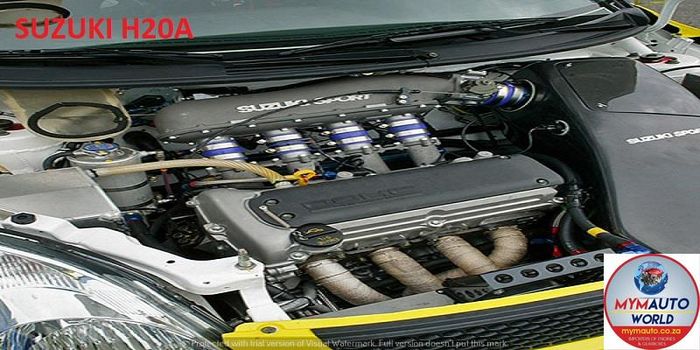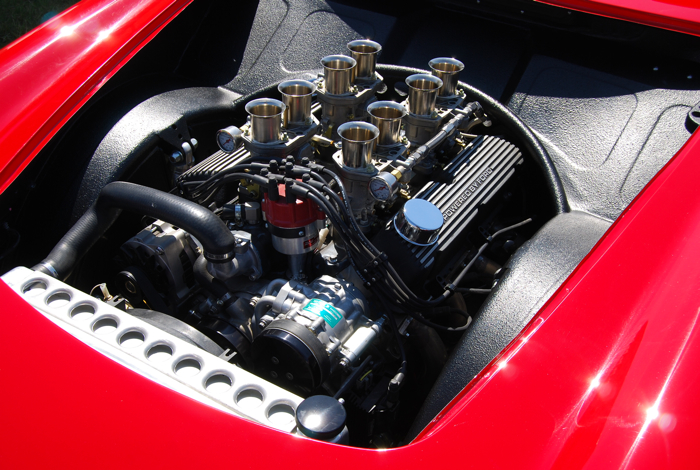Upgrade Your Lorry with a New Opel Corsa Engine
Upgrade Your Lorry with a New Opel Corsa Engine
Blog Article
Exploring the Inner Operation of a Compact Car's Engine System
As drivers, we commonly take for granted the complex procedures that occur within the confines of our lorry's engine system. In this exploration of a compact car's engine system, we will certainly untangle the inner functions of this mechanical harmony, shedding light on the mysteries that drive us ahead on our day-to-day trips.
Burning Refine Review
The burning process in a compact automobile's engine system is a vital mechanism that efficiently converts fuel into energy to power the automobile. This procedure occurs within the combustion chamber of the engine, where fuel and air mix, fire up, and create regulated explosions. The combustion procedure is composed of 4 major phases: intake, power, compression, and exhaust.
During the consumption stage, the piston relocates downward, drawing in a blend of air and fuel right into the combustion chamber. The following phase, compression, involves the piston relocating upward, pressing the air-fuel mixture to raise its potency. Ultimately, in the power stage, the ignition system fires up the pressed blend, resulting in a quick expansion of gases that requires the piston back down. This downward motion creates the power needed to drive the vehicle. Lastly, in the exhaust phase, the burned gases are gotten rid of from the burning chamber through the exhaust valve, preparing the chamber for the following cycle. This cyclic combustion procedure is basic to the operation of a small automobile's engine system, making certain efficient energy conversion for propulsion.
Piston and Cyndrical Tube Interaction

The piston's specific fit within the cylinder is necessary for keeping optimal compression and avoiding energy loss throughout burning. Tight clearances in between the piston and cyndrical tube wall surfaces make sure effective sealing, enabling the piston to move efficiently without permitting gases to leakage past. Proper lubrication is additionally essential to lower rubbing and put on between these components, enhancing long life and performance.
Moreover, the style and materials used in manufacturing the piston and cyndrical tube influence engine efficiency and resilience. Modern engines frequently employ light-weight yet durable products like light weight aluminum alloys for pistons and cylinder liners to decrease inertia and enhance thermal performance. Generally, the harmonious interaction in between the piston and cylinder is fundamental to the engine's capability and general performance.
Gas Injection System Capability
Gas injection systems in portable car engines play a crucial duty in exactly delivering gas to the combustion chamber for regulated and effective ignition. The gas injection system operates by infusing fuel right into the burning chamber at the optimal minute during the engine's procedure more info here (opel corsa engine). This accurate timing ensures that the fuel blends evenly with the air for appropriate combustion, causing improved gas efficiency and minimized exhausts
There are mainly 2 kinds of fuel shot systems used in small lorry engines: port fuel shot (PFI) and straight gas injection (DFI) PFI systems infuse fuel right into the intake port before the consumption shutoff, while DFI systems inject fuel straight into the combustion chamber. Both systems have their benefits, with DFI offering much better gas atomization and PFI providing a much more cost-effective option.
Recognizing Engine Cooling Mechanisms
Reliable operation of a small lorry's engine relies heavily on the efficiency of its cooling systems. Engine air conditioning is vital to protect against overheating, which can result in severe damages and lowered efficiency. The cooling system in a small vehicle usually consists of numerous components functioning with each other to regulate the engine temperature. One important component is the radiator, which makes use of coolant to soak up heat from the engine. As the hot coolant flows via the radiator, it launches warmth into the air, cooling off prior to going back to the engine. The water pump flows the coolant via the engine and radiator, making certain a regular circulation to manage temperature level. Furthermore, the thermostat assists manage the coolant circulation to preserve ideal engine temperature. Some cars also have cooling followers that activate when extra air conditioning is required, such as throughout hefty web traffic or hot more helpful hints weather. Understanding these engine air conditioning devices is crucial for keeping the efficiency and durability of a compact car's engine system.

Exhaust System Parts Explained
The ideal functioning of a compact lorry's engine cooling mechanisms relies on a corresponding system called the exhaust system, which comprises numerous necessary elements for ensuring reliable discharges and engine performance. The exhaust system consists of elements such as the exhaust manifold, catalytic converter, his response muffler, and tailpipe. The exhaust manifold gathers exhaust gases from the engine's routes and cyndrical tubes them to the catalytic converter. The catalytic converter then transforms hazardous pollutants in the exhaust right into less unsafe emissions before releasing them with the muffler and tailpipe.
One critical part of the exhaust system is the oxygen sensor, which keeps track of the oxygen degrees in the exhaust gases to help control gas usage and make certain ideal engine performance. opel corsa engine. Furthermore, the resonator may exist in some exhaust systems to lower sound degrees. In general, the exhaust system plays an essential function in preserving engine performance, minimizing damaging discharges, and guaranteeing a quieter driving experience for small automobile owners

Conclusion
In final thought, the small vehicle's engine system is a complex mix of components that interact to facilitate the combustion procedure, transform gas into power, and eliminate waste gases. Comprehending the inner functions of the engine system, including the piston and cylinder communication, fuel injection system, engine air conditioning devices, and exhaust system elements, is important for preserving ideal performance and effectiveness of the car.
The burning procedure in a compact car's engine system is a vital mechanism that successfully transforms gas right into power to power the vehicle.Gas injection systems in small automobile engines play an essential duty in precisely supplying fuel to the burning chamber for regulated and efficient ignition.There are largely 2 kinds of fuel shot systems made use of in portable vehicle engines: port fuel injection (PFI) and straight fuel injection (DFI) Understanding these engine air conditioning mechanisms is essential for keeping the efficiency and longevity of a portable car's engine system.
The optimum performance of a small car's engine air conditioning systems depends on a complementary system known as the exhaust system, which makes up various vital components for ensuring efficient exhausts and engine efficiency.
Report this page